

The Homefront

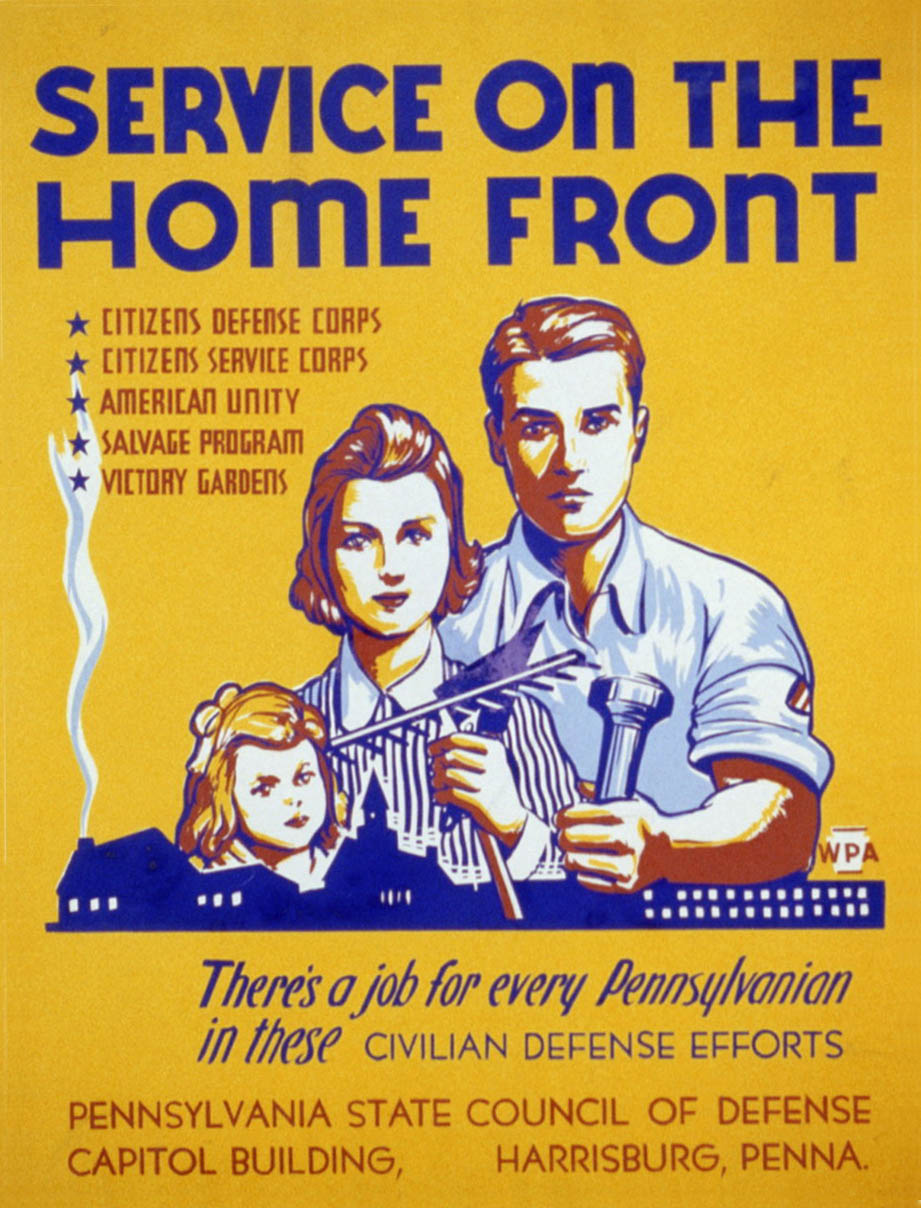
The War Comes Home
The home front of the United States in World War II supported the war effort in many ways, including a wide range of volunteer efforts and submitting to government-managed rationing and price controls. There was a general feeling of agreement that the sacrifices were for the national good for the duration of the war.
The labor market changed radically. Peacetime conflicts with respect to race and labor took on a special dimension because of the pressure for national unity. The Hollywood film industry was important for propaganda. Every aspect of life from politics to personal savings changed when put on a wartime footing. This was achieved by tens of millions of workers moving from low to high productivity jobs in industrial centers. Millions of students, retirees, housewives, and unemployed moved into the active labor force. Hours worked increased as leisure activities declined sharply.
Gasoline, meat, and clothing were tightly rationed. Most families were allocated 3 US gallons (11 l; 2.5 imp gal) of gasoline a week, which sharply curtailed driving for any purpose. Production of most durable goods, like cars, new housing, vacuum cleaners, and kitchen appliances, was banned until the war ended. In industrial areas, housing was in short supply as people doubled up and lived in cramped quarters. Prices and wages were controlled. Americans saved a high portion of their incomes, which led to renewed growth after the war.
Controls and Taxes
Federal tax policy was highly contentious during the war, with President Franklin D. Roosevelt battling a conservative Congress. However, both sides agreed on the need for high taxes (along with heavy borrowing) to pay for the war: top marginal tax rates ranged from 81%-94% for the duration of the war, and the income level subject to the highest rate was lowered from $5,000,000 to $200,000. Roosevelt tried unsuccessfully, by executive order 9250 to impose a 100% surtax on after-tax incomes over $25,000 (equal to roughly $353,558 today). However, Roosevelt did manage to impose this cap on executive pay in corporations with government contracts. Congress also enlarged the tax base by lowering the minimum income to pay taxes, and by reducing personal exemptions and deductions. By 1944 nearly every employed person was paying federal income taxes (compared to 10% in 1940).
Many controls were put on the economy. The most important were price controls, imposed on most products and monitored by the Office of Price Administration. Wages were also controlled. Corporations dealt with numerous agencies, especially the War Production Board (WPB), and the War and Navy departments, which had the purchasing power and priorities that largely reshaped and expanded industrial production.
In 1942 a rationing system was begun to guarantee minimum amounts of necessities to everyone (especially poor people) and prevent inflation. Tires were the first item to be rationed in January 1942 because supplies of natural rubber were interrupted. Gasoline rationing proved an even better way to allocate scarce rubber. In June 1942 the Combined Food Board was set up to coordinate the worldwide supply of food to the Allies, with special attention to flows from the U.S. and Canada to Britain. By 1943 one needed government issued ration coupons to purchase coffee, sugar, meat, cheese, butter, lard, margarine, canned foods, dried fruits, jam, gasoline, bicycles, fuel oil, clothing, silk or nylon stockings, shoes, and many other items. Some items, like automobiles and home appliances, were no longer made. The rationing system did not apply to used goods like clothes or cars, but they became more expensive since they were not subject to price controls.
To get a classification and a book of rationing stamps, one had to appear before a local rationing board. Each person in a household received a ration book, including babies and children. When purchasing gasoline, a driver had to present a gas card along with a ration book and cash. Ration stamps were valid only for a set period to forestall hoarding. All forms of automobile racing were banned, including the Indianapolis 500 which was cancelled from 1942 to 1945. Sightseeing driving was banned.
Personal Savings
Personal income was at an all-time high, and more dollars were chasing fewer goods to purchase. This was a recipe for economic disaster that was largely avoided because Americans—cajoled daily by their government to do so—were also saving money at an all-time high rate, mostly in War Bonds but also in private savings accounts and insurance policies. Consumer saving was strongly encouraged through investment in war bonds that would mature after the war. Most workers had an automatic payroll deduction; children collected savings stamps until they had enough to buy a bond. Bond rallies were held throughout the U.S. with famous celebrities, usually Hollywood film stars, to enhance the bond advertising effectiveness. Several stars were responsible for personal appearance tours that netted multiple millions of dollars in bond pledges—an astonishing amount in 1943. The public paid ¾ of the face value of a war bond, and received the full face value back after a set number of years. This shifted their consumption from the war to postwar, and allowed over 40% of GDP to go to military spending, with moderate inflation. Americans were challenged to put "at least 10% of every paycheck into Bonds". Compliance was very high, with entire factories of workers earning a special "Minuteman" flag to fly over their plant if all workers belonged to the "Ten Percent Club". There were seven major War Loan drives, all of which exceeded their goals.
Labor
The unemployment problem ended with the mobilization for war. Out of a labor force of 54 million, unemployment fell in half from 7.7 million in spring 1940 (when the first accurate statistics were compiled) to 3.4 million in fall 1941 and fell in half again to 1.5 million in fall 1942, hitting an all-time low of 700,000 in fall 1944. There was a growing labor shortage in war centers, with sound trucks going street by street begging for people to apply for war jobs.
Greater wartime production created millions of new jobs, while the draft reduced the number of young men available for civilian jobs. So great was the demand for labor that millions of retired people, housewives, and students entered the labor force, lured by patriotism and wages. The shortage of grocery clerks caused retailers to convert from service at the counter to self-service. With new shorter women clerks replacing taller men, some stores lowered shelves to 5 feet 8 inches (1.73 m). Before the war most groceries, dry cleaners, drugstores, and department stores offered home delivery service. The labor shortage and gasoline and tire rationing caused most retailers to stop delivery. They found that requiring customers to buy their products in person increased sales.
Women
Women also joined the workforce to replace men who had joined the forces, though in fewer numbers. Roosevelt stated that the efforts of civilians at home to support the war through personal sacrifice was as critical to winning the war as the efforts of the soldiers themselves. "Rosie the Riveter" became the symbol of women laboring in manufacturing. The war effort brought about significant changes in the role of women in society as a whole. When the male breadwinner returned, wives could stop working. At the end of the war, most of the munitions-making jobs ended. Many factories were closed; others retooled for civilian production. In some jobs women were replaced by returning veterans who did not lose seniority because they were in service. However the number of women at work in 1946 was 87% of the number in 1944, leaving 13% who lost or quit their jobs. Many women working in machinery factories and more were taken out of the work force. Many of these former factory workers found other work at kitchens, being teachers, etc.
The table shows the development of the United States labor force by sex during the war years.
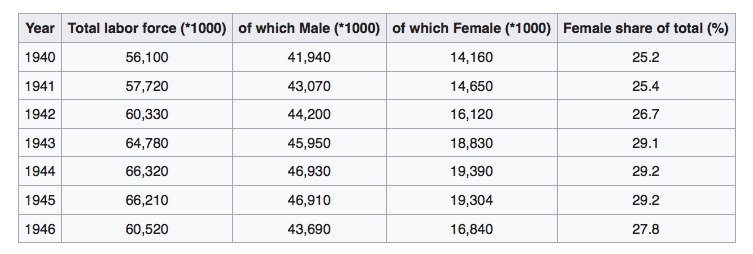
Women also took on new roles in sport and entertainment, which opened to them as more and more men were drafted. The All-American Girls Professional Baseball League [AAGPBL] was the creation of Chicago Cubs owner Philip Wrigley, who sought alternative ways to expand his baseball franchise as top male players left for military service. In 1943, he created an eight team League in small industrial cities around the Great Lakes; team names included the Kenosha Comets, the Rockford Peaches, and the Fort Wayne Daisies. Night games offered affordable, patriotic entertainment to working Americans who had flocked to wartime jobs in the Midwest hubs of Chicago and Detroit (although better paid than in the prewar Depression, most industrial war workers were on gas and tire rationing, limiting them to local recreation options.) The League provided a novelty entertainment of girls who played hardball as well as men, executing traditional baseball skills of sliding and double-plays while wearing short, feminine uniform skirts. Players as young as fifteen were recruited from farm families and urban industrial teams, chaperoned on the road and subject to strict rules of behavior that included mandatory makeup and feminine hair styling, no drinking or smoking, no swearing, no fraternization with men, and no wearing pants in public; moreover, the League only recruited white players. Fans supported the League to the extent that it continued well past the conclusion of the war, lasting through 1953. During the 1980s, the League was formally inducted into the Baseball Hall of Fame in Cooperstown, New York, and became the subject of a popular mainstream film called A League of Their Own.
Farming
Labor shortages were felt in agriculture, even though most farmers were given an exemption and few were drafted. Large numbers volunteered or moved to cities for factory jobs. At the same time many agricultural commodities were in greater demand by the military and for the civilian populations of Allies. Production was encouraged and prices and markets were under tight federal control. Civilians were encouraged to create "victory gardens", farms that were often started in backyards and lots. Children were encouraged to help with these farms, too.
The Bracero Program, a bi-national labor agreement between Mexico and the U.S., started in 1942. Some 290,000 braceros ("strong arms," in Spanish) were recruited and contracted to work in the agriculture fields. Half went to Texas, and 20% to the Pacific Northwest.
Between 1942 and 1946 some 425,000 Italian and German prisoners of war were used as farm laborers, loggers, and cannery workers. In Michigan, for example, the POWs accounted for more than one-third of the state's agricultural production and food processing in 1944.
Children
To help with the need for a larger source of food, the nation looked to school-aged children to help on farms. Schools often had a victory garden in vacant parking lots and on roofs. Children would help on these farms to help with the war effort.[21] The slogan, "Grow your own, can your own", also influenced children to help at home.
Teenagers
With the war's ever increasing need for able bodied men consuming America's labor force in the early 1940s, industry turned to teen-aged boys and girls to fill in as replacements. Consequently, many states had to change their child-labor laws to allow these teenagers to work. The lures of patriotism, adulthood, and money led many youth to drop out of school and take a defense job. Between 1940 and 1944, the number of teenage workers increased by 1.9 million, and the number of students in public high schools dropped from 6.6 million in 1940 to 5.6 million in 1944, as a million students—and many teachers—took jobs.
Labor Unions
The war mobilization changed the relationship of the Congress of Industrial Organizations (CIO) with both employers and the national government.[25] Both the CIO and the larger American Federation of Labor (AFL) grew rapidly in the war years.
Nearly all the unions that belonged to the CIO were fully supportive of both the war effort and of the Roosevelt administration. However the United Mine Workers, who had taken an isolationist stand in the years leading up to the war and had opposed Roosevelt's reelection in 1940, left the CIO in 1942. The major unions supported a wartime no-strike pledge that aimed to eliminate not only major strikes for new contracts, but also the innumerable small strikes called by shop stewards and local union leadership to protest particular grievances. In return for labor's no-strike pledge, the government offered arbitration to determine the wages and other terms of new contracts. Those procedures produced modest wage increases during the first few years of the war but not enough to keep up with inflation, particularly when combined with the slowness of the arbitration machinery.
Even though the complaints from union members about the no-strike pledge became louder and more bitter, the CIO did not abandon it. The Mine Workers, by contrast, who did not belong to either the AFL or the CIO for much of the war, threatened numerous strikes including a successful twelve-day strike in 1943. The strikes and threats made mine leader John L. Lewis a much hated man and led to legislation hostile to unions.
All the major unions grew stronger during the war. The government put pressure on employers to recognize unions to avoid the sort of turbulent struggles over union recognition of the 1930s, while unions were generally able to obtain maintenance of membership clauses, a form of union security, through arbitration and negotiation. Employers gave workers new untaxed benefits (such as vacation time, pensions, and health insurance), which increased real incomes even when wage rates were frozen. The wage differential between higher skilled and less skilled workers narrowed, and with the enormous increase in overtime for blue collar wage workers (at time and a half pay), incomes in working class households shot up, while the salaried middle class lost ground.
The experience of bargaining on a national basis, while restraining local unions from striking, also tended to accelerate the trend toward bureaucracy within the larger CIO unions. Some, such as the Steelworkers, had always been centralized organizations in which authority for major decisions resided at the top. The UAW, by contrast, had always been a more grassroots organization, but it also started to try to rein in its maverick local leadership during these years. The CIO also had to confront deep racial divides in its own membership, particularly in the UAW plants in Detroit where white workers sometimes struck to protest the promotion of black workers to production jobs, but also in shipyards in Alabama, mass transit in Philadelphia, and steel plants in Baltimore. The CIO leadership, particularly those in further left unions such as the Packinghouse Workers, the UAW, the NMU, and the Transport Workers, undertook serious efforts to suppress hate strikes, to educate their membership, and to support the Roosevelt Administration's tentative efforts to remedy racial discrimination in war industries through the Fair Employment Practices Commission. Those unions contrasted their relatively bold attack on the problem with the approach of the AFL.
The CIO unions were progressive in dealing with gender discrimination in wartime industry, which now employed many more women workers in nontraditional jobs. Unions that had represented large numbers of women workers before the war, such as the UE (electrical workers) and the Food and Tobacco Workers, had a records of fighting discrimination against women. Most union leaders saw women as temporary wartime replacements for the men in the armed forces. It was important that the wages of these women be kept high so that the veterans would get high wages upon their return.
Civilian Support
Early in the war, it became apparent that German U-boats were using the backlighting of coastal cities in the Eastern Seaboard and the South to destroy ships exiting harbors. It became the first duties of civilians recruited for local civilian defense to ensure that lights were either off or thick curtains drawn over all windows at night.
State Guards were reformed for internal security duties to replace the National Guardsmen who were federalized and sent overseas. The Civil Air Patrol was established, which enrolled civilian spotters in air reconnaissance, search-and-rescue, and transport. Its Coast Guard counterpart, the Coast Guard Auxiliary, used civilian boats and crews in similar rescue roles. Towers were built in coastal and border towns, and spotters were trained to recognize enemy aircraft. Blackouts were practiced in every city, even those far from the coast. All exterior lighting had to be extinguished, and black-out curtains placed over windows. The main purpose was to remind people that there was a war on and to provide activities that would engage the civil spirit of millions of people not otherwise involved in the war effort. In large part, this effort was successful, sometimes almost to a fault, such as the Plains states where many dedicated aircraft spotters took up their posts night after night watching the skies in an area of the country that no enemy aircraft of that time could possibly hope to reach.
The United Service Organizations (USO) was founded in 1941 in response to a request from President Franklin D. Roosevelt to provide morale and recreation services to uniformed military personnel. The USO brought together six civilian agencies: the Salvation Army, Young Men's Christian Association, Young Women's Christian Association, National Catholic Community Service, National Travelers Aid Association, and the National Jewish Welfare Board.
Women volunteered to work for the Red Cross, the USO and other agencies. Other women previously employed only in the home, or in traditionally female work, took jobs in factories that directly supported the war effort, or filled jobs vacated by men who had entered military service. Enrollment in high schools and colleges plunged as many high school and college students dropped out to take war jobs.
Various items, previously discarded, were saved after use for what was called "recycling" years later. Families were requested to save fat drippings from cooking for use in soap making. Neighborhood "scrap drives" collected scrap copper and brass for use in artillery shells. Milkweed was harvested by children ostensibly for lifejackets.
To help with the need for a larger source of food, the nation looked to school-aged children to help on farms. Schools often had a victory garden in vacant parking lots and on roofs. Children would help on these farms to help with the war effort.[21] The slogan, "Grow your own, can your own", also influenced children to help at home.
Draft
In 1940, Congress passed the first peace-time draft legislation. It was renewed (by one vote) in summer 1941. It involved questions as to who should control the draft, the size of the army, and the need for deferments. The system worked through local draft boards comprising community leaders who were given quotas and then decided how to fill them. There was very little draft resistance.
The nation went from a surplus manpower pool with high unemployment and relief in 1940 to a severe manpower shortage by 1943. Industry realized that the Army urgently desired production of essential war materials and foodstuffs more than soldiers. (Large numbers of soldiers were not used until the invasion of Europe in summer 1944.) In 1940–43 the Army often transferred soldiers to civilian status in the Enlisted Reserve Corps in order to increase production. Those transferred would return to work in essential industry, although they could be recalled to active duty if the Army needed them. Others were discharged if their civilian work was deemed essential. There were instances of mass releases of men to increase production in various industries. Working men who had been classified 4F or otherwise ineligible for the draft took second jobs.[citation needed]
In the figure below an overview of the development of the United States labor force, the armed forces and unemployment during the war years.
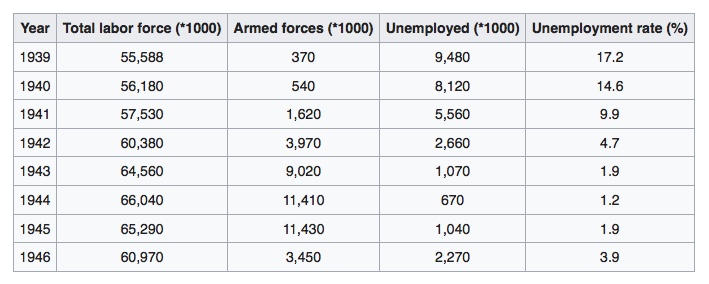
One contentious issue involved the drafting of fathers, which was avoided as much as possible. The drafting of 18-year-olds was desired by the military but vetoed by public opinion. Racial minorities were drafted at the same rate as Whites, and were paid the same, but blacks were kept in all-black units. The experience of World War I regarding men needed by industry was particularly unsatisfactory—too many skilled mechanics and engineers became privates (there is a possibly apocryphal story of a banker assigned as a baker due to a clerical error, noted by historian Lee Kennett in his book "G.I.") Farmers demanded and were generally given occupational deferments (many volunteered anyway, but those who stayed at home lost postwar veteran's benefits.)
Later in the war, in light of the tremendous amount of manpower that would be necessary for the invasion of France in 1944, many earlier deferment categories became draft eligible.
Pacifism
The churches showed much less pacifism than in 1914. The Church of God, based in Anderson, Indiana, had a strong pacifist element, reaching a high point in the late 1930s. The Church regarded World War II as a just war because America was attacked. Likewise the Quakers generally regarded World War II as a just war and about 90% served, although there were some conscientious objectors. The Mennonites and Brethren continued their pacifism, but the federal government was much less hostile than in the previous war. These churches helped their young men to both become conscientious objectors and to provide valuable service to the nation. Goshen College set up a training program for unpaid Civilian Public Service jobs. Although the young women pacifists were not liable to the draft, they volunteered for unpaid Civilian Public Service jobs to demonstrate their patriotism; many worked in mental hospitals. The Jehovah Witness denomination, however, refused to participate in any forms of service, and thousands of its young men refused to register and went to prison.
Suspected Disloyalty
To help with the need for a larger source of food, the nation looked to school-aged children to help on farms. Schools often had a victory garden in vacant parking lots and on roofs. Children would help on these farms to help with the war effort. The slogan, "Grow your own, can your own", also influenced children to help at home.
Population Movements
There was large-scale migration to industrial centers, especially on the West Coast. Millions of wives followed their husbands to military camps; for many families, especially from farms, the moves were permanent. One 1944 survey of migrants in Portland, Oregon and San Diego found that three quarters wanted to stay after the war. Many new military training bases were established or enlarged, especially in the South. Large numbers of African Americans left the cotton fields and headed for the cities. Housing was increasingly difficult to find in industrial centers, as there was no new non-military construction. Commuting by car was limited by gasoline rationing. People car pooled or took public transportation, which was severely overcrowded. Trains were heavily booked, with uniformed military personnel taking priority, so people limited vacation and long-distance travel.
Racial Tensions
The large-scale movement of blacks from the rural South to defense centers in the North (and some in the South) led to small-scale local confrontations over jobs and housing shortages. Washington feared a major race war. The cities were relatively peaceful; much-feared large-scale race riots did not happen, but there was small-scale violence, as in the 1943 race riot in Detroit and the anti-Mexican Zoot Suit Riots in Los Angeles in 1943. The "zoot suit" was a highly conspicuous costume worn by Mexican American teenagers in Los Angeles. As historian Roger Bruns notes, "the Zoot suit also represented a stark visual expression of culture for Mexican Americans, about making a statement—a mark of defiance against the place in society in which they found themselves." They gained admiration from their in-group, but disgust and ridicule from others, especially the Anglos.
Role of Women
During the war the traditional gender division of labor changed somewhat, as the "home" or domestic female sphere expanded to include the "home front". Meanwhile, the public sphere—the male domain—was redefined as the international stage of military action.
Employment
Wartime mobilization drastically changed the sexual divisions of labor for women, as young able-bodied men were sent overseas and war time manufacturing production increased. Throughout the war, according to Susan Hartmann (1982), an estimated 6.5 million women entered the labor force. Women, many of whom were married, took a variety of paid jobs in a multitude of vocational jobs, many of which were previously exclusive to men. The greatest wartime gain in female employment was in the manufacturing industry, where more than 2.5 million additional women represented an increase of 140 percent by 1944. This was catalyzed by the "Rosie the Riveter" phenomenon.
The composition of the marital status of women who went to work changed considerably over the course of the war. One in every ten married women entered the labor force during the war, and they represented more than three million of the new female workers, while 2.89 million were single and the rest widowed or divorced. For the first time in the nation's history there were more married women than single women in the female labor force. In 1944, thirty-seven percent of all adult women were reported in the labor force, but nearly fifty percent of all women were actually employed at some time during that year at the height of wartime production. In the same year the unemployment rate hit an all-time historical low of 1.2%.
The women who sought employment, based on various surveys and public opinion reports at the time suggests that financial reasoning was the justification for entering the labor force; however, patriotic motives made up another large portion of women's desires to enter. Women whose husbands were at war were more than twice as likely to seek jobs.
Fundamentally, women were thought to be taking work defined as "men's work;" however, the work women did was typically catered to specific skill sets management thought women could handle. Management would also advertise women's work as an extension of domesticity. For example, in a Sperry Corporation recruitment pamphlet the company stated, "Note the similarity between squeezing orange juice and the operation of a small drill press." A Ford Motor Company at Willow Run bomber plant publication proclaimed, "The ladies have shown they can operate drill presses as well as egg beaters." One manager was even stated saying, "Why should men, who from childhood on never so much as sewed on buttons be expected to handle delicate instruments better than women who have plied embroidery needles, knitting needles and darning needs all their lives?" In these instances, women were thought of and hired to do jobs management thought were similar to domestic tasks.
Following the war, many women left their jobs voluntarily. One Twin Cities Army Ammunition Plant (formally Twin Cities Ordnance Plant) worker in New Brighton, Minnesota confessed, "I will gladly get back into the apron. I did not go into war work with the idea of working all my life. It was just to help out during the war." Other women were laid off by employers to make way for returning veterans who did not lose their seniority due to the war.
By the end of the war, many men who entered into the service did not return. This left women to take up sole responsibility of the household and provide economically for the family.
Nursing
Nursing became a highly prestigious occupation for young women. A majority of female civilian nurses volunteered for the Army Nurse Corps or the Navy Nurse Corps. These women automatically became officers. Teenaged girls enlisted in the Cadet Nurse Corps. To cope with the growing shortage on the homefront, thousands of retired nurses volunteered to help out in local hospitals.
Volunteer Activities
Women staffed millions of jobs in community service roles, such as nursing, the USO, and the Red Cross.[59] Unorganized women were encouraged to collect and turn in materials that were needed by the war effort. Women collected fats rendered during cooking, children formed balls of aluminum foil they peeled from chewing gum wrappers and also created rubber band balls, which they contributed to the war effort. Hundreds of thousands of men joined civil defense units to prepare for disasters, such as enemy bombing.
The Women Airforce Service Pilots (WASP) mobilized 1,000 civilian women to fly new warplanes from the factories to airfields located on the east coast of the U.S. This was historically significant because flying a warplane had always been a male role. No American women flew warplanes in combat.
Baby Boom
Marriage and motherhood came back as prosperity empowered couples who had postponed marriage. The birth rate started shooting up in 1941, paused in 1944–45 as 12 million men were in uniform, then continued to soar until reaching a peak in the late 1950s. This was the "Baby Boom."
In a New Deal-like move, the federal government set up the "EMIC" program that provided free prenatal and natal care for the wives of servicemen below the rank of sergeant.
Housing shortages, especially in the munitions centers, forced millions of couples to live with parents or in makeshift facilities. Little housing had been built in the Depression years, so the shortages grew steadily worse until about 1949, when a massive housing boom finally caught up with demand. (After 1944 much of the new housing was supported by the G.I. Bill.)
Federal law made it difficult to divorce absent servicemen, so the number of divorces peaked when they returned in 1946. In long-range terms, divorce rates changed little.
Housewives
Juggling their roles as mothers due to the Baby Boom and the jobs they filled while the men were at war, women strained to complete all tasks set before them. The war caused cutbacks in automobile and bus service, and migration from farms and towns to munitions centers. Those housewives who worked found the dual role difficult to handle.
Stress came when sons, husbands, fathers, brothers, and fiancés were drafted and sent to faraway training camps, preparing for a war in which nobody knew how many would be killed. Millions of wives tried to relocate near their husbands' training camps.
Wartime Politics
Roosevelt easily won the bitterly contested 1940 election, but the Conservative coalition maintained a tight grip on Congress regarding taxes and domestic issues. Wendell Willkie, the defeated GOP candidate in 1940, became a roving ambassador for Roosevelt. After Vice President Henry A. Wallace became emeshed in a series of squabbles with other high officials, Roosevelt stripped him of his administrative responsibilities and dropped him from the 1944 ticket. Roosevelt in cooperation with big city party leaders, replaced Wallace with Missouri Senator Harry S. Truman. Truman was best known for investigating waste, fraud and inefficiency in wartime programs. In very light turnout in 1942 the Republicans made major gains. In the 1944 election, Roosevelt defeated Tom Dewey in a race that attracted little attention.
Patriotism
Patriotism became the central theme of advertising throughout the war, as large scale campaigns were launched to sell war bonds, promote efficiency in factories, reduce ugly rumors, and maintain civilian morale. The war consolidated the advertising industry's role in American society, deflecting earlier criticism. The media cooperated with the federal government in presenting the official view of the war. All movie scripts had to be pre-approved. For example, there were widespread rumors in the Army to the effect that people on the home front were slacking off. A Private SNAFU film cartoon (released to soldiers only) belied that rumor. Tin Pan Alley produced patriotic songs to rally the people.
Posters
Posters helped to mobilize the nation. Inexpensive, accessible, and ever-present, the poster was an ideal agent for making war aims the personal mission of every citizen. Government agencies, businesses, and private organizations issued an array of poster images linking the military front with the home front—calling upon every American to boost production at work and at home. Some resorted to extreme racial and ethnic caricatures of the enemy, sometimes as hopelessly bumbling cartoon characters, sometimes as evil, half-human creatures.
Bond Drives
A strong aspect of American culture then as now was a fascination with celebrities, and the government used them in its eight war bond campaigns that called on people to save now (and redeem the bonds after the war, when houses, cars and appliances would again be available.) The War Bond drives helped finance the war. Americans were challenged to put at least 10% of every paycheck into bonds. Compliance was high, with entire work places earning a special "Minuteman" flag to fly over their plant if all workers belonged to the "Ten Percent Club".
Hollywood
Hollywood studios also went all-out for the war effort, as studios encouraged their stars (such as Clark Gable and James Stewart) to enlist. Hollywood had military units that made training films – Ronald Reagan narrated many of them. Most of all Hollywood made hundreds of war movies that, in coordination with the Office of War Information (OWI), taught Americans what was happening and who the heroes and the villains were. Ninety million people went to the movies every week. Some of the most highly regarded films during this period included Casablanca, Mrs. Miniver, Going My Way, and Yankee Doodle Dandy. Even before active American involvement in the war, the popular Three Stooges comic trio were lampooning the Nazi German leadership, and Nazis in general, with a number of short subject films, starting with You Nazty Spy! in January 1940, nearly two years before the United States was drawn into World War II.
Cartoons and short subjects were a major sign of the times, as Warner Brothers Studios and Disney Studios gave unprecedented aid to the war effort by creating cartoons that were both patriotic and humorous, and also contributed to remind movie-goers of wartime activities such as rationing and scrap drives, war bond purchases, and the creation of victory gardens. Warner shorts such as Daffy - The Commando, Draftee Daffy, Herr Meets Hare, and Russian Rhapsody are particularly remembered for their biting wit and unflinching mockery of the enemy (particularly Adolf Hitler, Hideki Tōjō, and Hermann Göring). Their cartoons of Private Snafu, produced for the military as "training films", served to remind many military men of the importance of following proper procedure during wartime, for their own safety. Hanna Barbara also contributed to the war effort with slyly pro US short cartoon The Yankee Doodle Mouse with "Lt." Jerry Mouse as the hero and Tom Cat as the "enemy".
To heighten the suspense, Hollywood needed to feature attacks on American soil, and obtained inspirations for dramatic stories from the Philippines. Indeed, the Philippines became a "homefront" that showed the American way of life threatened by the Japanese enemy. Especially popular were the films Texas to Bataan (1942), Corregidor (1943), Bataan (1943), They Were Expendable (1945), and Back to Bataan (1945).
The OWI had to approve every film before they could be exported. To facilitate the process the OWI's Bureau of Motion Pictures (BMP) worked with producers, directors and writers before the shooting started to make sure that the themes reflected patriotic values. While Hollywood had been generally nonpolitical before the war, the liberals who controlled OWI encouraged the expression of New Deal liberalism, bearing in mind the huge domestic audience, as well as an international audience that was equally large.
Censorship
The Office of Censorship published a code of conduct for newspapers, magazines, and broadcasters. The office did not use government censors to preapprove all articles and radio programs. It relied on voluntary cooperation to avoid subjects, such as troop movements, weather forecasts, and the travels of the President, that might aid the enemy. Journalists did not have to publish positive propaganda, unlike during World War I.
Local Activism
One way to enlist everyone in the war effort was scrap collection (called "recycling" decades later). Many everyday commodities were vital to the war effort, and drives were organized to recycle such products as rubber, tin, waste kitchen fats (a raw material for explosives), newspaper, lumber, steel, and many others. Popular phrases promoted by the government at the time were "Get into the scrap!" and "Get some cash for your trash" (a nominal sum was paid to the donor for many kinds of scrap items) and Thomas "Fats" Waller even wrote and recorded a song with the latter title. Such commodities as rubber and tin remained highly important as recycled materials until the end of the war, while others, such as steel, were critically needed at first. War propaganda played a prominent role in many of these drives. Nebraska had perhaps the most extensive and well-organized drives; it was mobilized by the Omaha World Herald newspaper.
Attacks on U.S. Soil
Although the Axis powers never launched a full-scale invasion on the U.S. mainland, there were attacks and acts of sabotage on U.S. soil.
- December 7, 1941 – Attack on Pearl Harbor, the reason why the U.S. entered the war.
- January–August 1942 – Second Happy Time, German U-Boats engaged American ships off the U.S. East Coast.
- February 23, 1942 – Bombardment of Ellwood, a Japanese sabotage act on California.
- March 4, 1942 – Operation K, a Japanese reconnaissance over Pearl Harbor following the attack on December 7, 1941.
- June 3, 1942 – Aleutian Islands Campaign, the battle for the then Territory of Alaska.
- June 21–22, 1942 – Bombardment of Fort Stevens, the only attack on a U.S. military base on the U.S. mainland in World War II.
- September 9, 1942 and September 29, 1942 – Lookout Air Raids, the only attack by enemy aircraft on the U.S. mainland in World War II.
- November 1944–April 1945 – Fu-Go balloon bombs, over 9,300 of them were launched by Japan across the Pacific Ocean towards the U.S. mainland with the goal of starting forest fires. On May 5, 1945, six U.S. civilians were killed in Oregon when they stumbled upon a bomb and it exploded, the only wartime deaths to occur on the U.S. mainland as a result of enemy action.
Source: Wikipedia
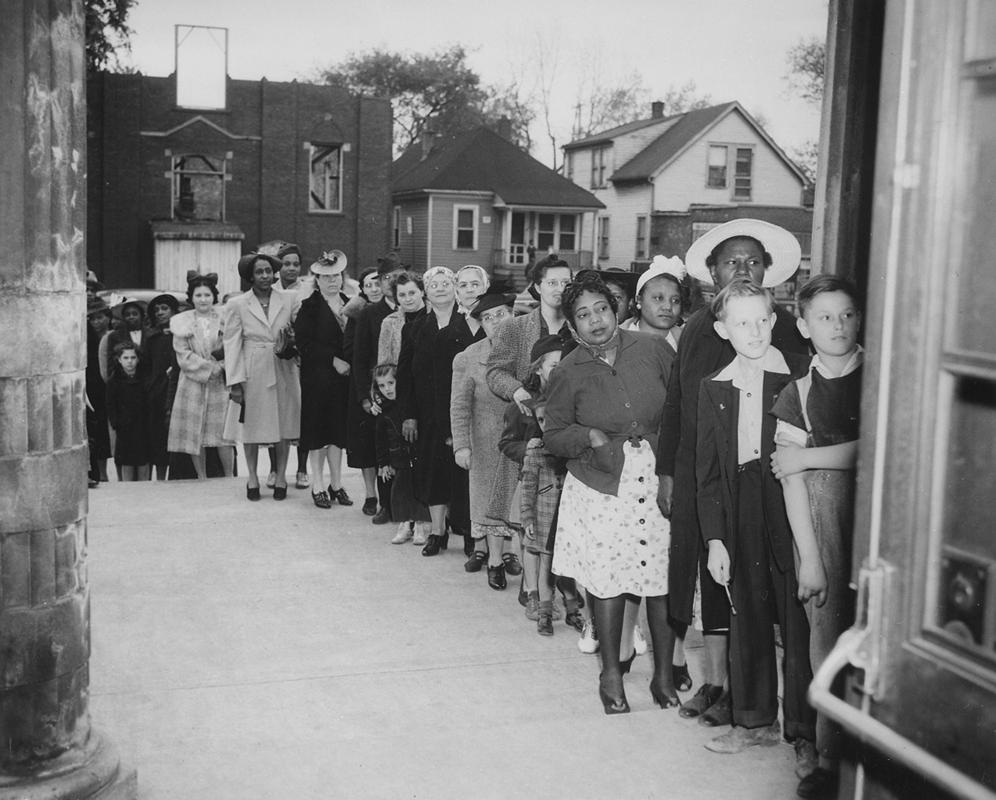
Sugar rationing
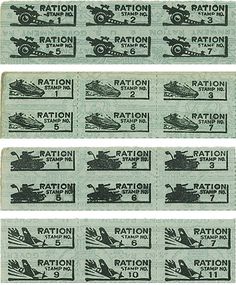
Rationing stamps
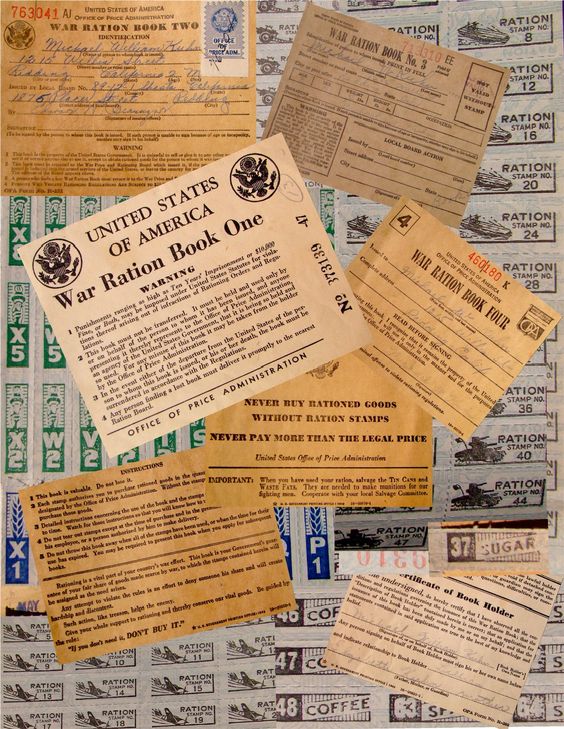
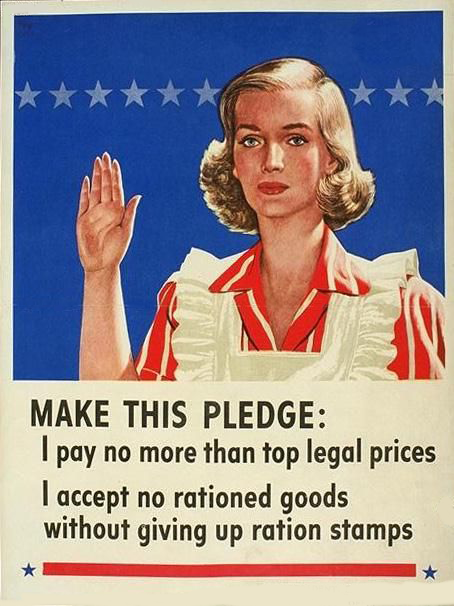
Rationing poster
Click on any image to zoom.
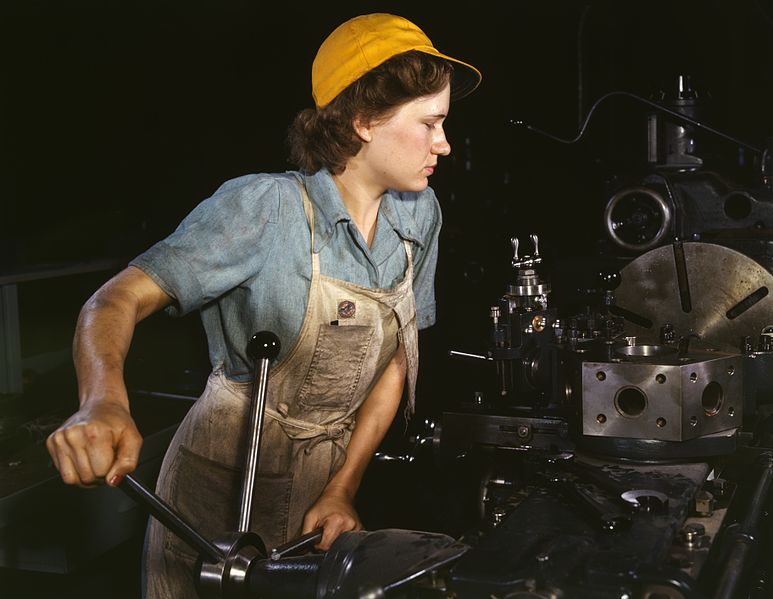
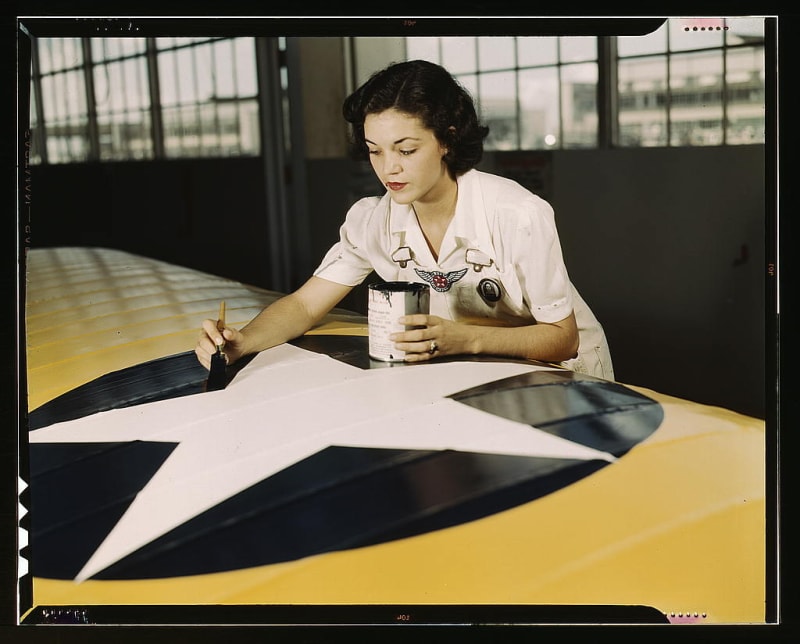
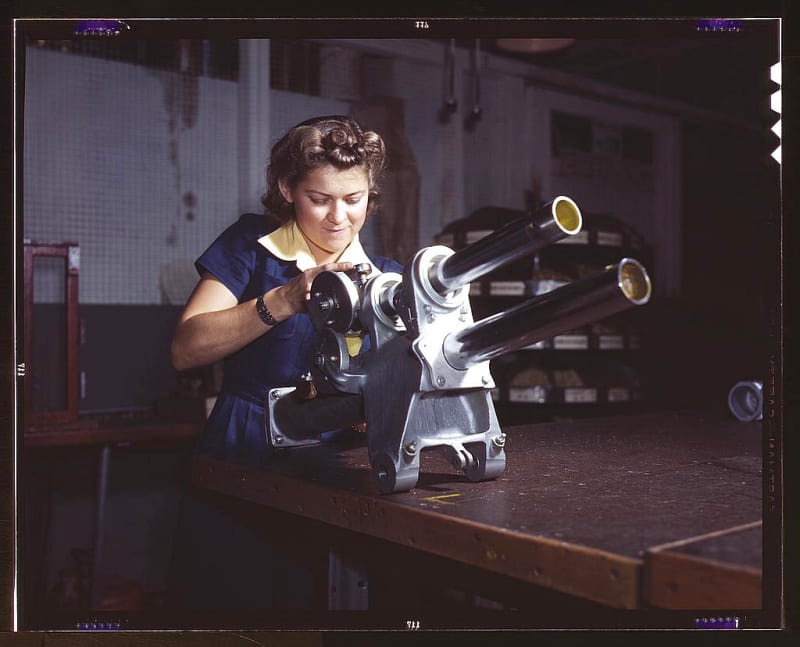
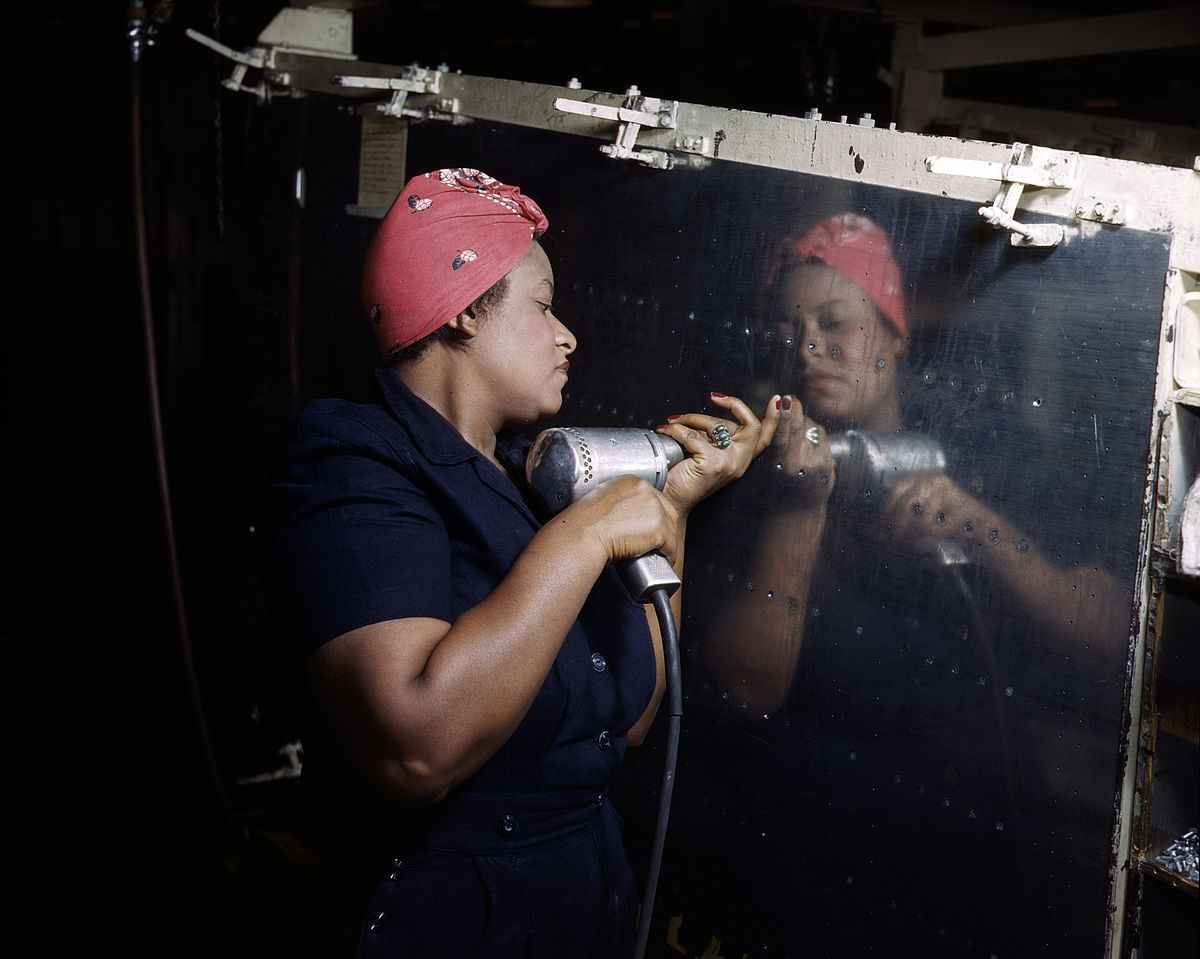
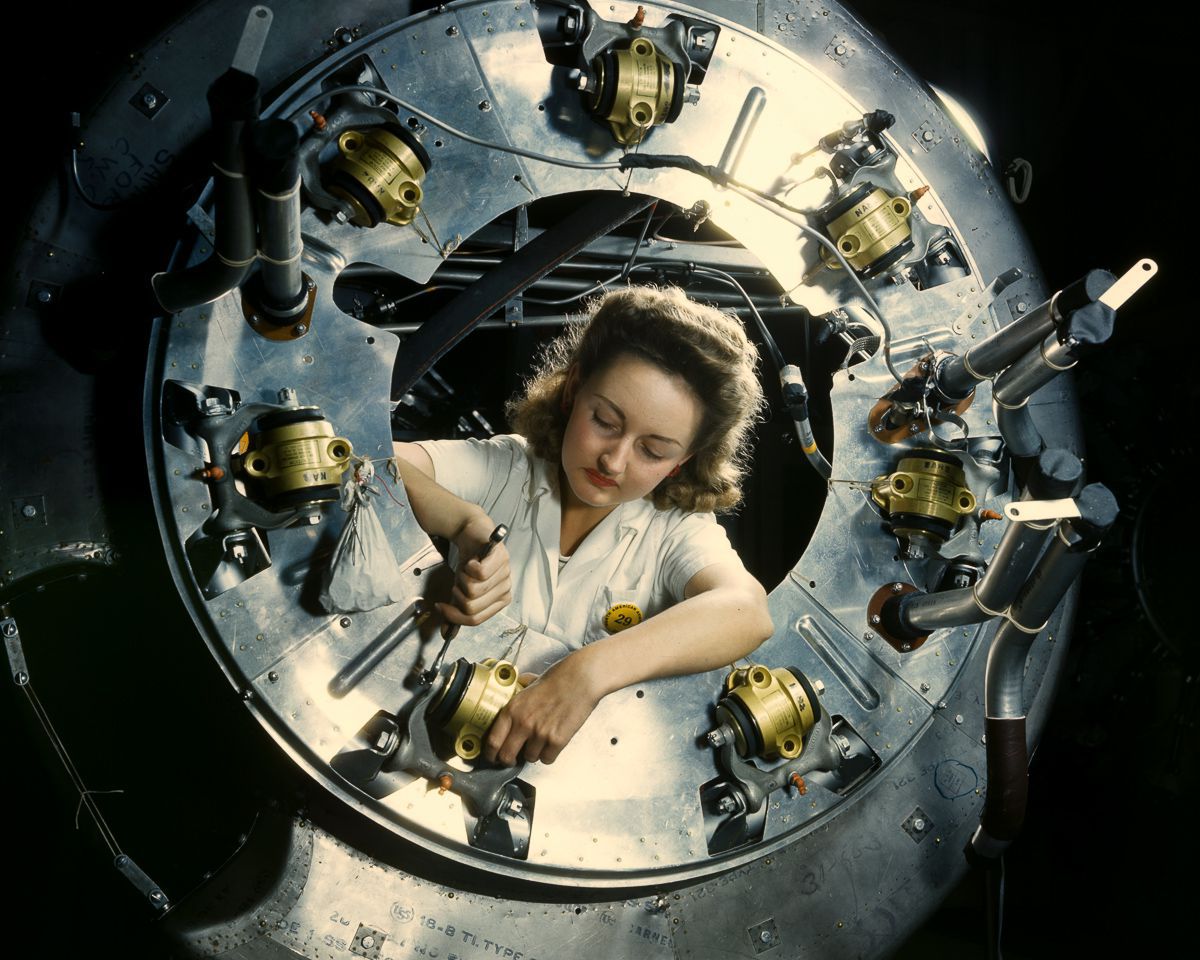
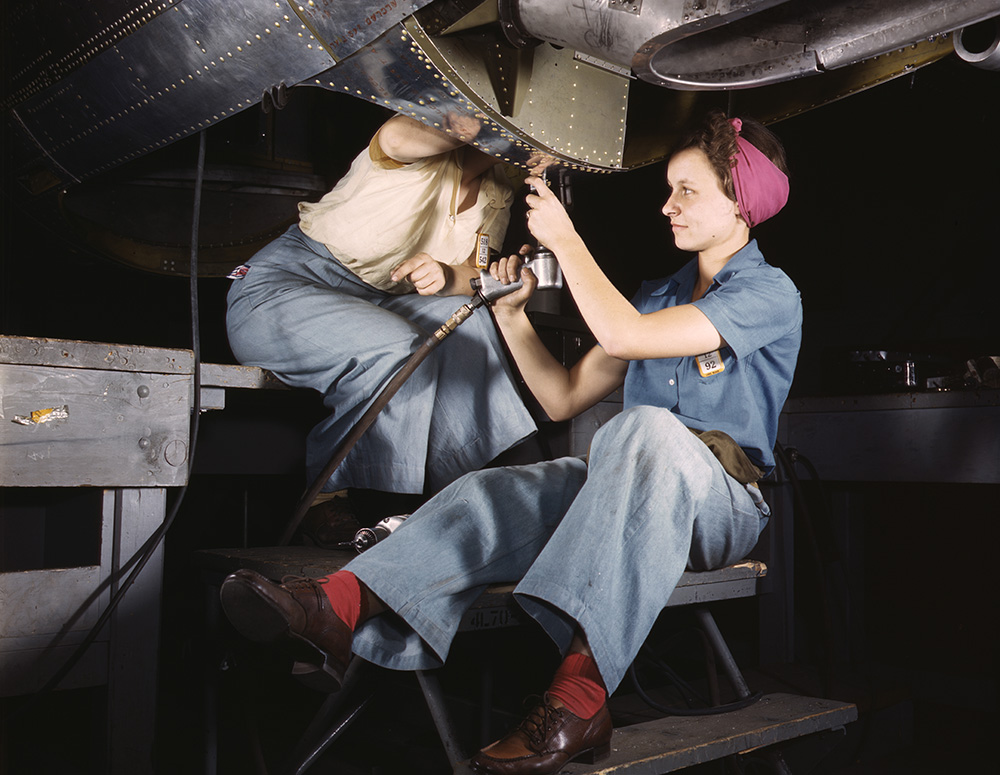
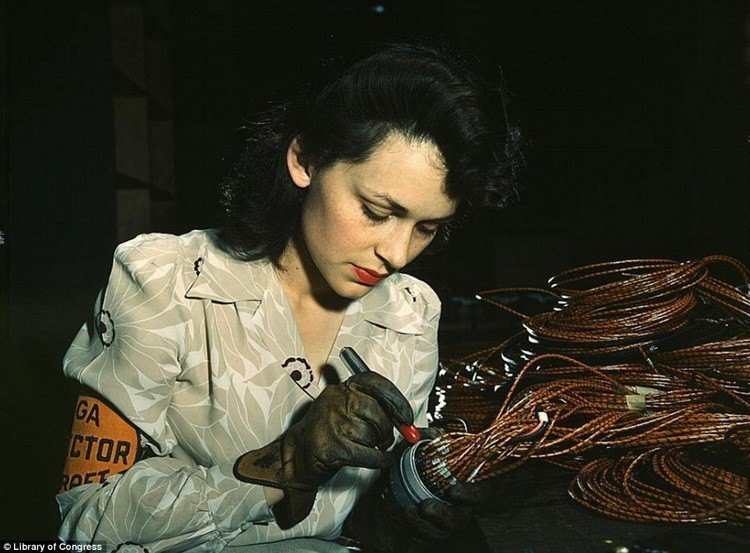
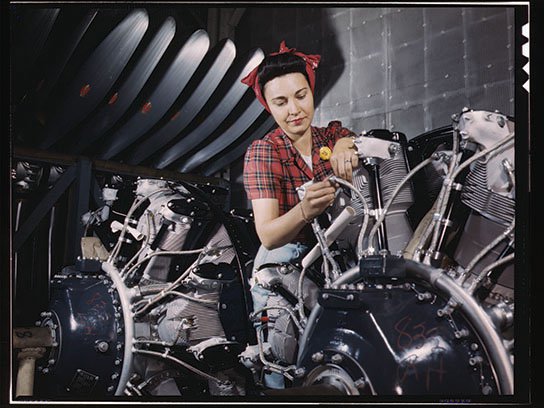
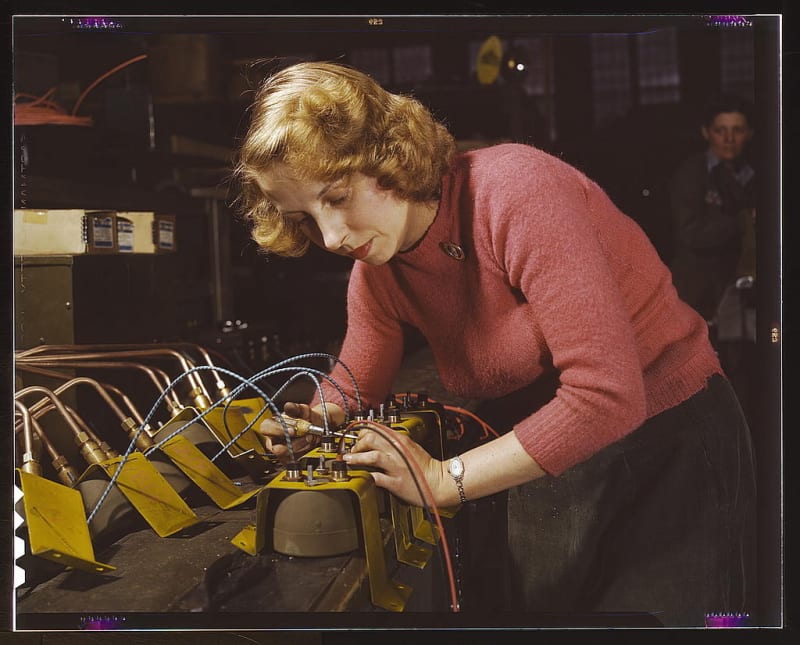
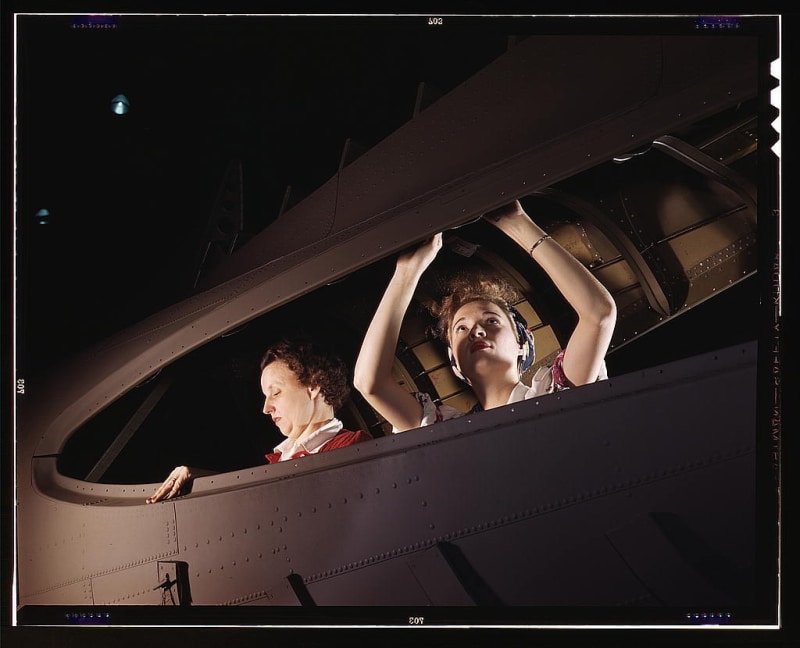
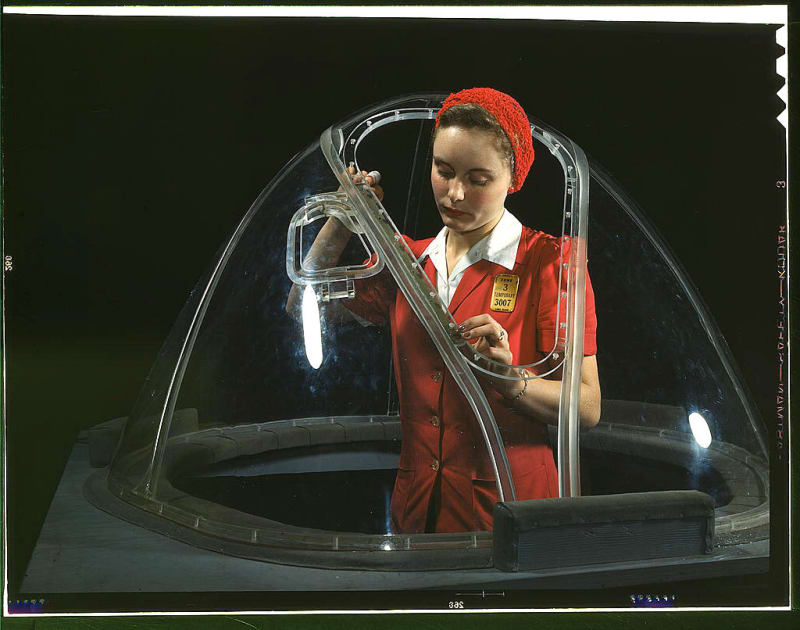
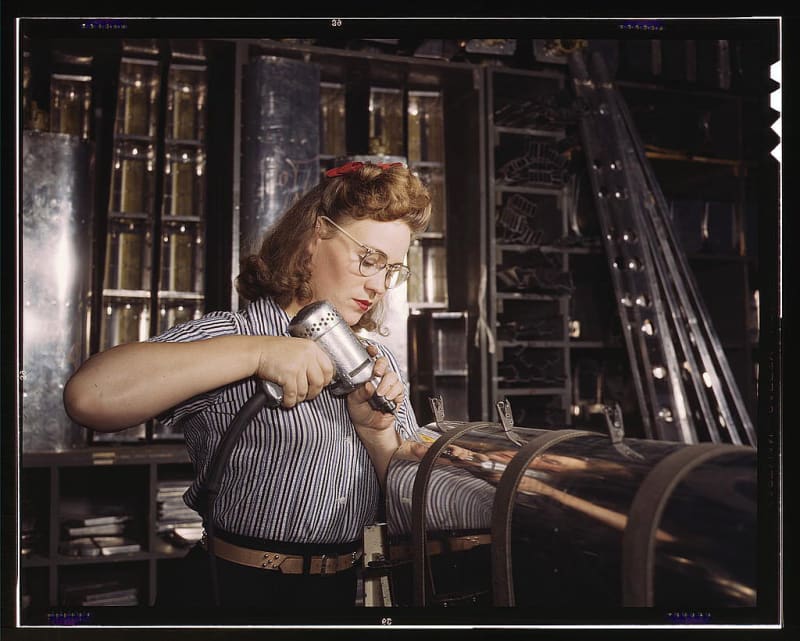
Rosie the Riveter, by the dozen
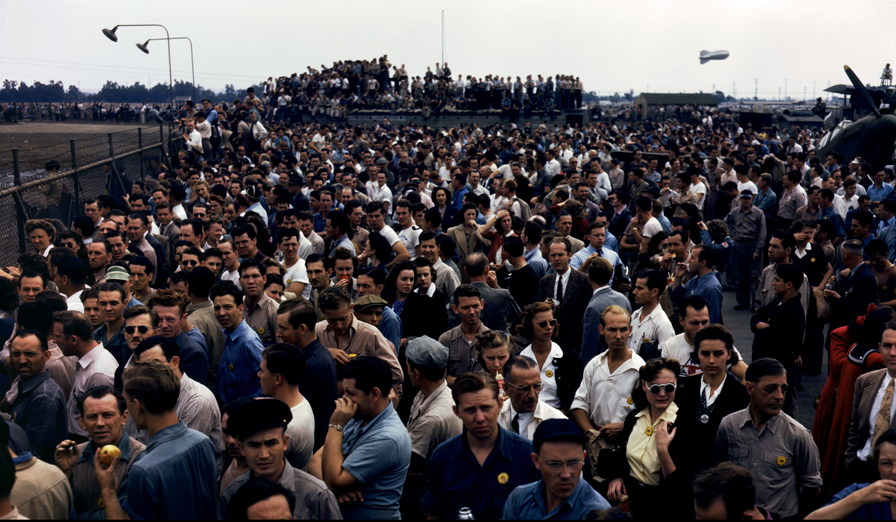
Workers on the Liberator Bombers, Consolidated Aircraft, Fort Worth, Texas, 1942
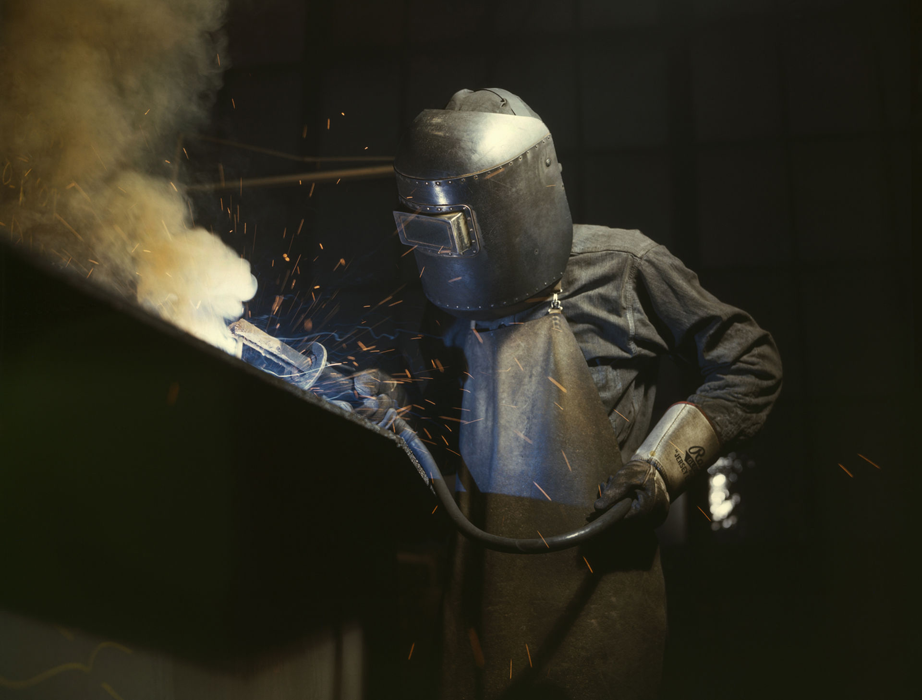
Welder making boilers for a ship, Combustion Engineering Co., Chattanooga, Tennessee. June 1942
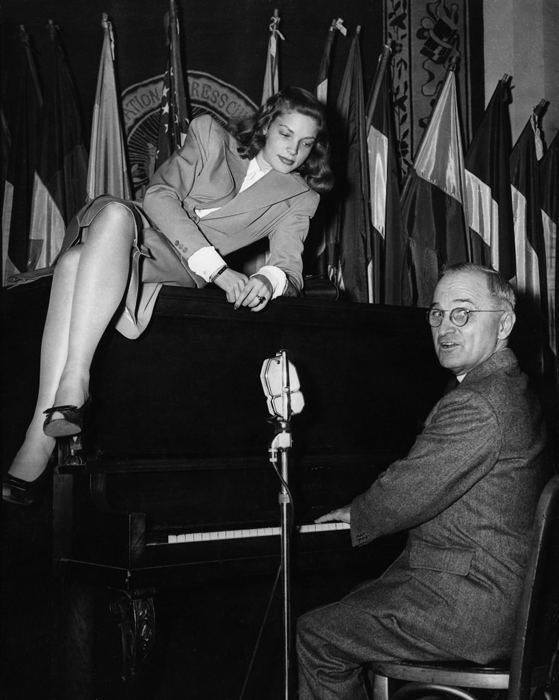
Actress Lauren Bacall with then-Vice President Truman, taking part in a stage show for 800 servicemen at the National Press Club canteen on February 10, 1945
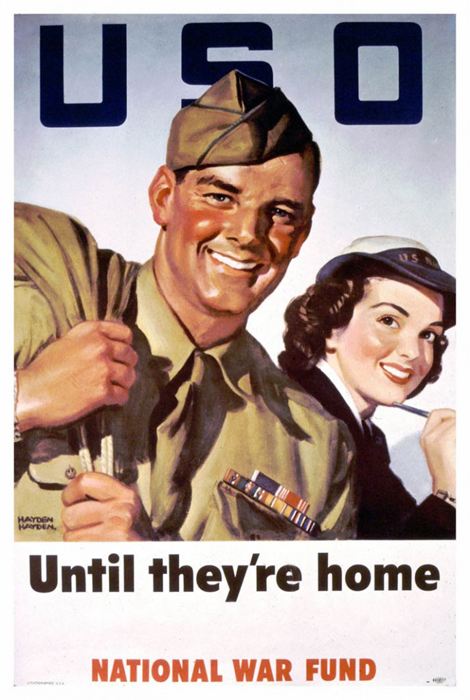
USO Poster, WWII. On 4 February 1941, the USO (United Service Organizations) was established to provide social clubs and entertainment for troops
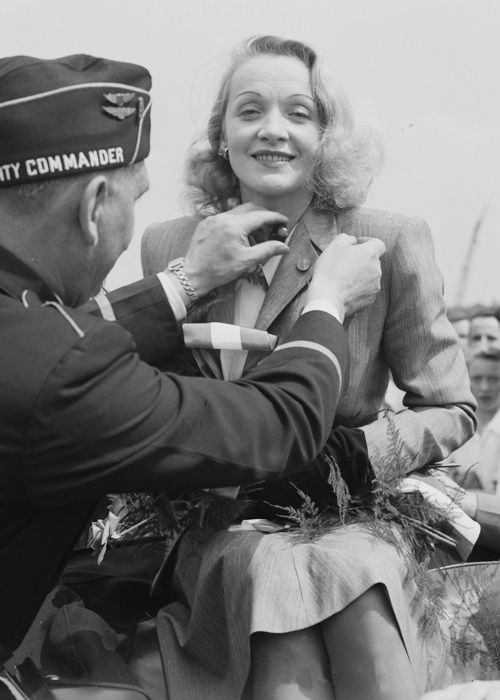
Actress Marlene Dietrich, selling war bonds in Davenport, Iowa, June 1942
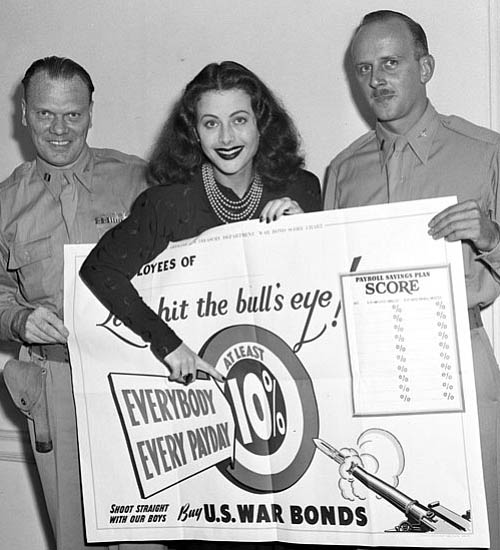
Actress Hedi Lamarr on war bond tour
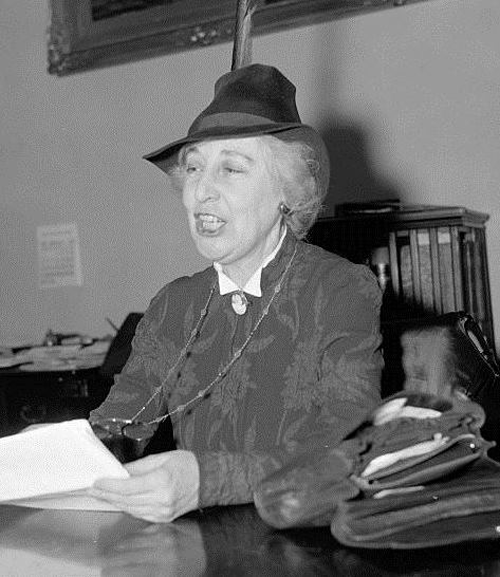
Montana Representative Jeanette Rankin cast the sole vote against the Declaration of War with Japan. The surprise Japanese attack on the U.S. military base at Pearl Harbor was devastating, and the vast majority of Americans supported President Roosevelt’s call for a declaration of war. While she was voted out of office, many angry American felt that such an obvious act of treason deserved the death penalty.
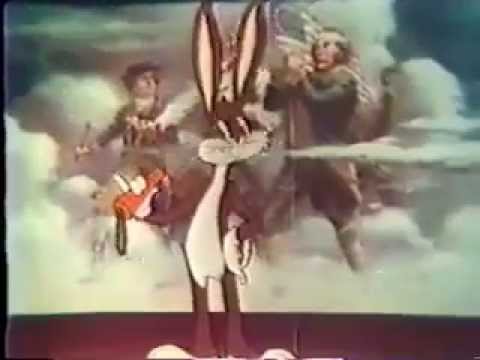
Any Bonds Today?" is a song written by Irving Berlin, featured in a 1942 animated patriotic film starring Bugs Bunny. Both were used to sell war bonds during World War II.

